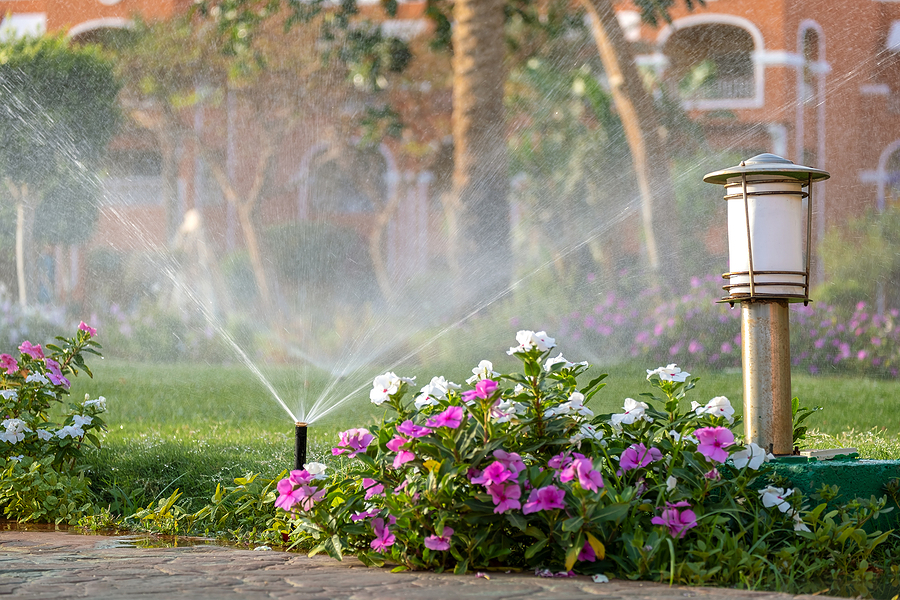Tips for Watering Your Lawn
If you want a healthy, beautiful lawn, you need to be on top of watering. Water is an essential part of a good lawn. However, watering can be tricky to get right. If you run a sprinkler or use your hose at night, you may find yourself fighting lawn diseases. If you water too lightly, your roots will not grow deeply enough, setting your lawn up for trouble when the summer days get hot. If you water too much, you create the risk of soggy areas and potential for mildew. It’s important to get your watering just right.

Check Your Lawn
When your lawn takes on a dull cast, it’s telling you it’s ready for water. You can also tell how hydrated your lawn is by walking on it. If your footprints don’t disappear quickly, that means the blades of grass don’t have enough moisture so they aren’t able to spring back.
Best Times to Water
The best time to water is in the morning, before 10:00 am, so that the water can soak into the soil while the air and soil is cooler and the winds are calmer. If you need to water in the evening, between 4:00 and 6:00 pm is also a good time, as it will give the grass time to dry before the sun sets.
How Much to Water
Most lawns need about 1 – 1.5 inches of water a week to maintain healthy growth. This can be from rainfall or watering, and can be split into two waterings if you prefer. You want to water until the top 6-8 inches of soil is wet. Overwatering or spotty watering is a concern, so make sure that you water evenly and you are providing the right amount of water.
An Irrigation System Promotes a Healthy Lawn
Knowing how to perfectly water your lawn to balance your soil needs, the current weather pattern, and the health of your grass is more complicated than most homeowners realize when they try to water with sprinklers or a hose.
An irrigation system provides consistent watering that can be adjusted during the wet spring months and dry summer months, which both present their own challenges. An irrigation system preserves soil nutrients, which is vital to a healthy lawn. When manually watering a lawn, it is easy to over water some spots and underwater others. An irrigation system is designed so that every part of your lawn receives the amount of water needed to stay healthy. Underwatering can cause dead spots, but overwatering can be just as bad. An irrigation system can also be scheduled for the best parts of the day, making sure that the sun won’t immediately evaporate your efforts, or excess water will sit all evening, allowing for fungal growth.
Other Benefits of an Irrigation System
A beautiful lawn adds curb appeal to your home, and a well-landscaped property is attractive to buyers. In addition, having an irrigation system in place will also increase the value of your home, should you be interested in listing it in the future. Although adding an irrigation system is an investment in your landscape design plans initially, a calibrated irrigation system will cut out any water waste, reducing your monthly water bill in the long run. You’ll have the control to adjust the schedule as the season, weather, and circumstances change.
When it comes to lawn care, making sure your lawn has everything it needs to maintain health and beauty is a lot of responsibility. An irrigation system saves homeowners from having to manually water their lawns and gardens. This is especially important if you have a large yard, difficulty getting around, or are just too busy to devote so much time to lawn care. Irrigation systems work on schedules and sensors to ensure that you don’t need to worry about adding another thing to your to-do list. If you’re ready to consider your irrigation system options and maintain a great looking lawn without the manual effort, contact Sprinkler Pro today.
Contact Us

